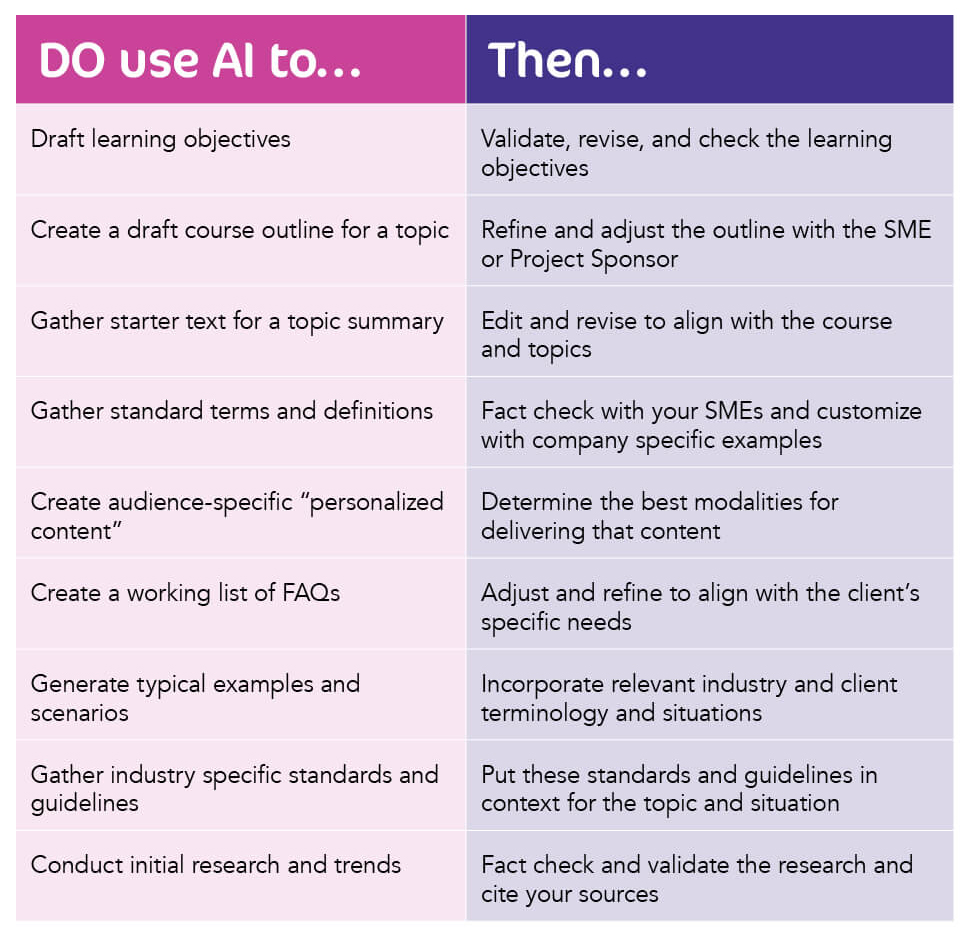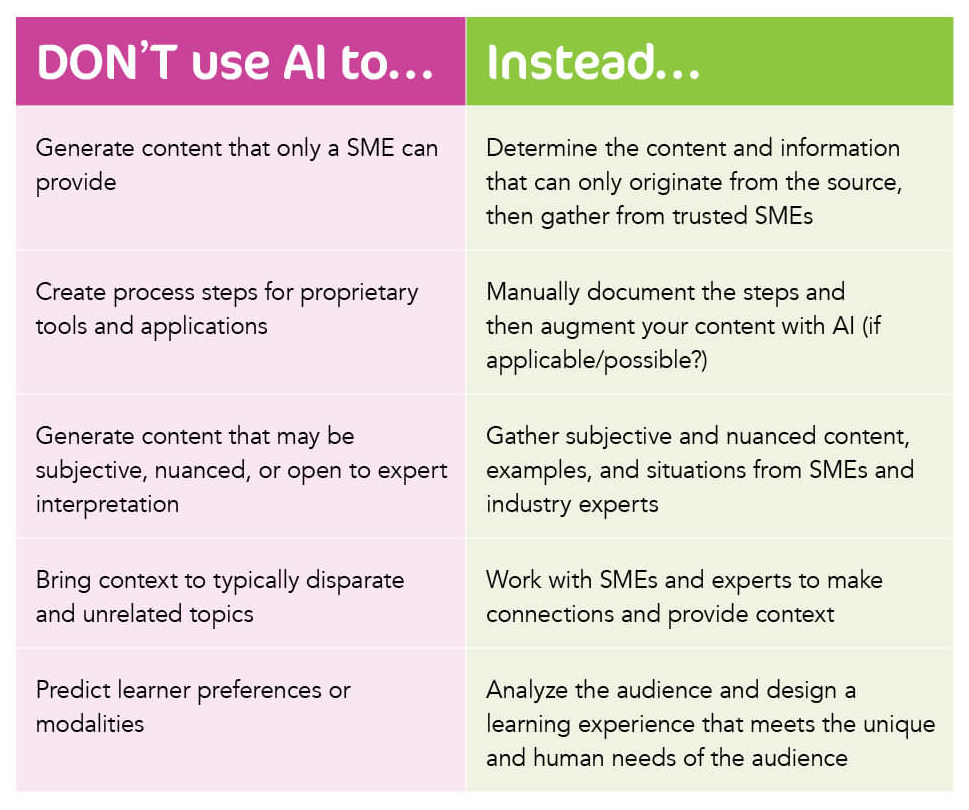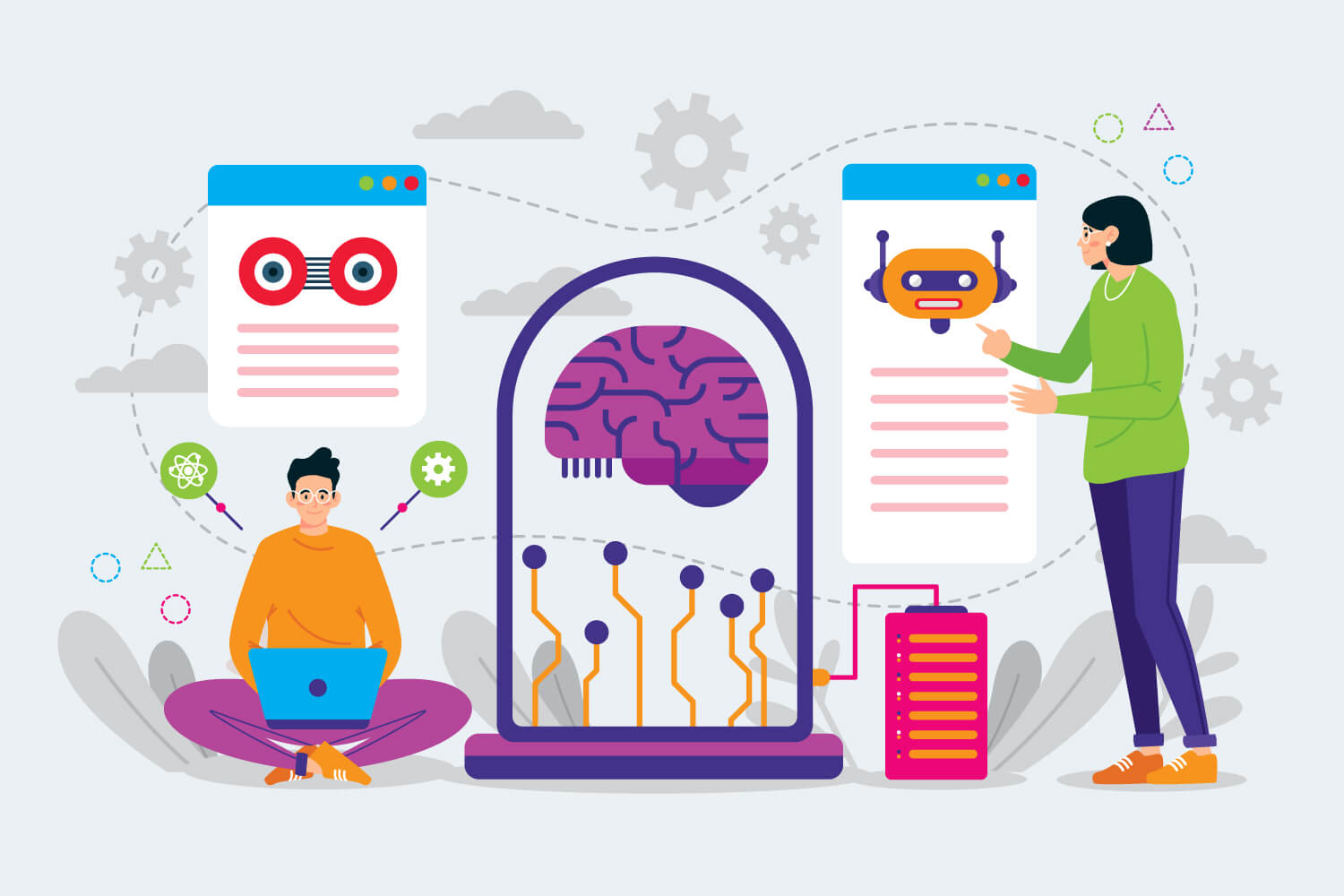The DOs and DON’Ts of AI Generated Training Content
“AI tools and content generation” are all the buzz for a reason — because they work for you — when you work them! Part of that work, done by the Learning & Development team, includes knowing when it is appropriate to use AI tools versus when the human touch is required to design, develop, and deliver training.
Before we talk about putting in the work and the “Dos and Don’ts of AI in L&D,” let’s address the elephant in the room… AI cannot replace what we do as learning professionals.
AI can:
- Accelerate and automate content creation
- Draft learning objectives, course outlines, and knowledge checks
- Help fill in the gaps in content
- Personalize the learning experience
AI cannot:
- Determine the best learning modality to meet the specific objectives of a project
- Fact check content with Subject Matter Experts
- Answer nuanced questions that require a subjective answer
- Employ strategies for motivation and engagement
- Tell you whether your content is appropriate for your audience
- Create a custom learning experience that meets the unique needs of your audience
AI can do a lot of things, but it needs to be managed, finessed, and double checked so you don’t get a distorted version of the truth. Not knowing the right questions to ask, leaving the algorithms to their own devices, and blindly trusting the outcomes can have serious consequences. As with any software, you need to learn the ins and outs of the tool to get the best results. Humans are crucial to the process, and you have to know how to best utilize the tools at hand.
If you are still not convinced AI can’t take the place of your job, then look at how AI, when left unchecked, can go horribly wrong in this article from “The Guardian” by way of the daily newsletter “Morning Brew.”
A New Zealand supermarket’s experiment using AI to generate recipes didn’t go so well. The AI recommended meals such as “deadly chlorine gas” and “poison bread sandwiches.”
Using AI to Transform Training Design and Delivery
While AI content creation is in its early stages, these tools reduce the time it takes to research, brainstorm, outline, and rewrite content for instructional design. In the article, Leveraging AI Text Generation for Enhanced Training Development, Tristia Hennessey explores practical ways instructional designers can harness the power of AI tools to optimize their workflow and create exceptional training programs, including example prompts to get you started.
The DOs and DON’Ts of AI in Training Design and Delivery
As you start to get comfortable with using AI in training design and delivery, remember you need to put in the time to consider some of the lessons our team at Evolve has learned, as we have started implementing AI to accelerate and augment our custom blended learning across various industries and subject areas.
AI Tools in Training Design, Development, and Delivery

How to Streamline Training Development
AI tools, when used appropriately, can Streamline Training Development (Check out Evolve’s Lead Instructional Designer, Tristia Hennessey, showcase of seven cutting-edge AI tools at the AI in Learning Summit). From text generation and transcription, custom media creation, and so much more, these tools allow for valuable time and resources to be better allocated to the human experience.
As AI and content generation continue to grow, those in the Learning & Development space will need to grow alongside it. Finding the best uses of AI and content creation and sharing industry/relevant knowledge amongst ourselves is the best way to make sure these tools work for us instead of against us.

